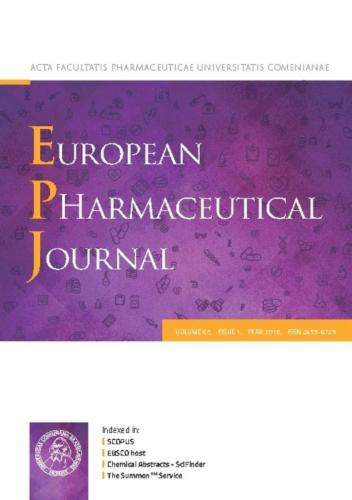Engineered-affibody conjugates contribute to the specific targeting and cellular retention of polyplexes in Erbb3 overexpressed lung cancer cells
IF 4.3
3区 医学
Q1 PHARMACOLOGY & PHARMACY
引用次数: 0
Abstract
Ligand-modified nanoparticles have shown the ability to specifically bind to tumor cells, improving retention in tumors after initial accumulation driven by the enhanced permeability and retention effect. These particles are typically engineered to bind to receptors overexpressed in cancer cells compared to healthy cells, such as the HER3 (Erbb3) receptor in lung cancer. In this study, we confirmed the overexpression of Erbb3 in various KRAS mutant lung cancer cell lines. An engineered affibody, well-established in previous research, was selected to target Erbb3 as a proof of concept. The affibody was integrated into the particle system via two distinct strategies. In the pre-functionalization approach, the affibody was conjugated to PEI or C14-PEI using SPDP as a linker. A spectral shift technique was then used to assess the affinity of the affibody and affibody conjugates toward Erbb3, allowing us to estimate the half-maximal effective concentration (EC50). Following synthesis and characterization, various polyplex formulations were prepared, including mRNA complexes with PEI-affibody, C14-PEI/PEI-affibody, and C14-PEI/C14-PEI-affibody. In the post-functionalization approach, polyplex formulations composed of different blends of C14-PEI and functionalized Azido-PEI were initially prepared and subsequently modified with DBCO-functionalized affibody via click chemistry. These formulations were prepared at various nitrogen to phosphate (N/P) ratios and characterized in terms of particle size, polydispersity index (PDI), and zeta potential. We also evaluated cellular uptake and eGFP mRNA expression to understand how the different formulations and conjugates influenced ligand-modified polyplex properties and delivery behavior. Our results demonstrated that affibody conjugates can specifically target Erbb3 and promote polyplex accumulation in KRAS-mutated lung cancer cells. We further analyzed the impact of conjugation methods and affibody density on polyplex design and performance. In conclusion, this study highlights the advantages of using specific targeting ligands. By optimizing formulation components, conjugation methods, and ligand density, various targeting ligands can be attached to polyplexes, enhancing cell-specific targeting, internalization, and retention. These findings provide valuable insights and a foundation for future targeted therapies and polyplex design.

工程修饰的粘附体偶联物有助于Erbb3过表达肺癌细胞中多复合物的特异性靶向和细胞保留。
配体修饰的纳米颗粒已经显示出与肿瘤细胞特异性结合的能力,通过增强的渗透性和滞留效应,在初始积累后改善在肿瘤中的滞留。与健康细胞相比,这些颗粒通常被改造成与癌细胞中过度表达的受体结合,例如肺癌中的Erbb3受体。在本研究中,我们证实了Erbb3在多种KRAS突变肺癌细胞系中的过表达。在之前的研究中,我们选择了一种工程修饰的词缀来靶向Erbb3,作为概念的证明。词缀通过两种不同的策略被整合到粒子系统中。在预功能化方法中,使用SPDP作为连接体将粘附体偶联到PEI或C14-PEI上。然后使用光谱移位技术来评估词缀和词缀共轭物对ErbB3的亲和力,使我们能够估计半最大有效浓度(EC50)。经过合成和表征,制备了多种复配物,包括pei -词缀、C14-PEI/ pei -词缀和C14-PEI/C14-PEI-词缀的mRNA复合物。在后功能化方法中,首先制备了由C14-PEI和功能化叠氮- pei的不同共混物组成的复配物配方,然后通过点击化学用dbco功能化的附着体修饰。这些配方以不同的氮磷比(N/P)制备,并以粒径、多分散性指数(PDI)和zeta电位进行表征。我们还评估了细胞摄取和eGFP mRNA表达,以了解不同的配方和缀合物如何影响配体修饰的多聚物性质和递送行为。我们的研究结果表明,在kras突变的肺癌细胞中,粘附体缀合物可以特异性靶向Erbb3并促进多聚体的积累。我们进一步分析了共轭方式和附着体密度对多路复用设计和性能的影响。总之,本研究强调了使用特异性靶向配体的优势。通过优化配方成分、偶联方法和配体密度,各种靶向配体可以附着在多聚物上,增强细胞特异性靶向、内化和保留。这些发现为未来的靶向治疗和复合设计提供了有价值的见解和基础。
本文章由计算机程序翻译,如有差异,请以英文原文为准。
求助全文
约1分钟内获得全文
求助全文
来源期刊
CiteScore
9.60
自引率
2.20%
发文量
248
审稿时长
50 days
期刊介绍:
The journal publishes research articles, review articles and scientific commentaries on all aspects of the pharmaceutical sciences with emphasis on conceptual novelty and scientific quality. The Editors welcome articles in this multidisciplinary field, with a focus on topics relevant for drug discovery and development.
More specifically, the Journal publishes reports on medicinal chemistry, pharmacology, drug absorption and metabolism, pharmacokinetics and pharmacodynamics, pharmaceutical and biomedical analysis, drug delivery (including gene delivery), drug targeting, pharmaceutical technology, pharmaceutical biotechnology and clinical drug evaluation. The journal will typically not give priority to manuscripts focusing primarily on organic synthesis, natural products, adaptation of analytical approaches, or discussions pertaining to drug policy making.
Scientific commentaries and review articles are generally by invitation only or by consent of the Editors. Proceedings of scientific meetings may be published as special issues or supplements to the Journal.

 求助内容:
求助内容: 应助结果提醒方式:
应助结果提醒方式:


